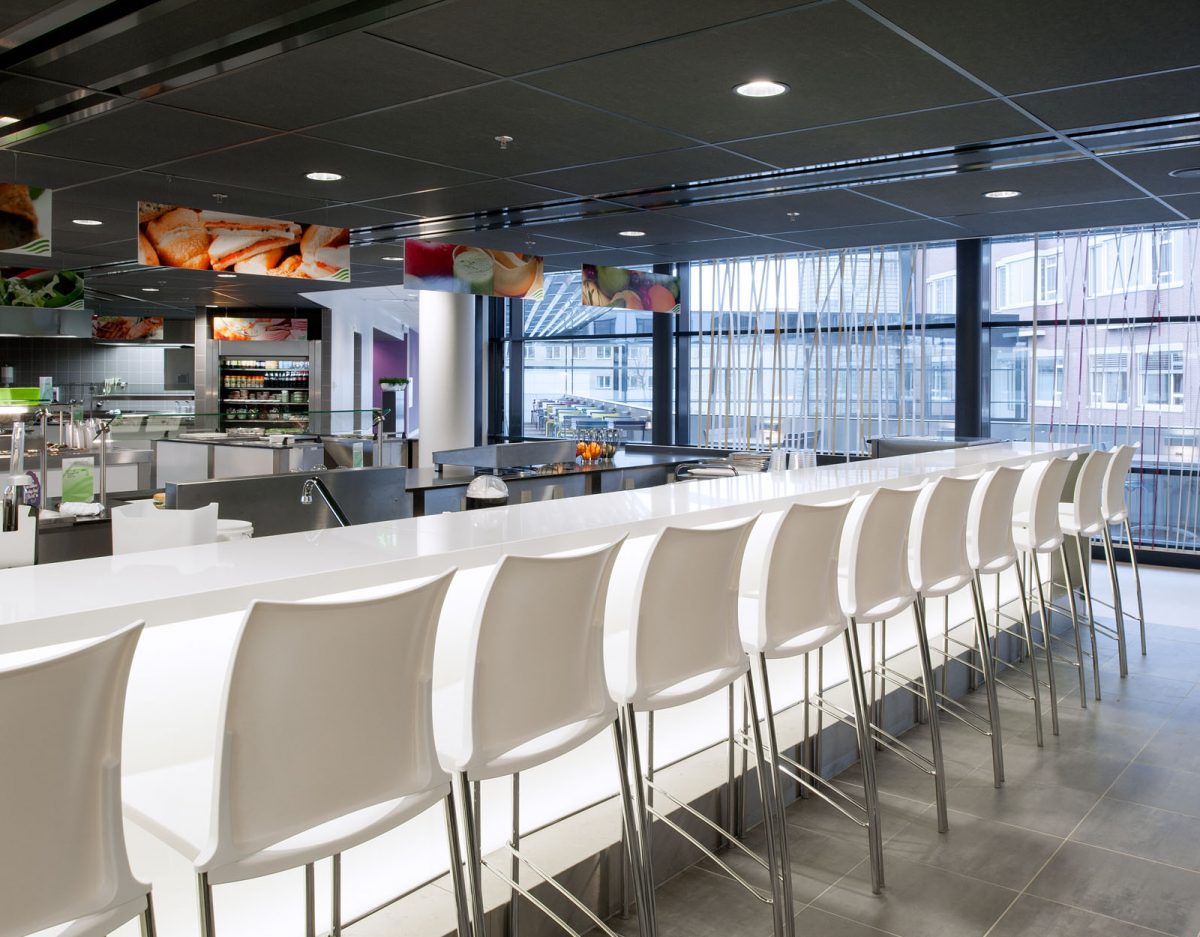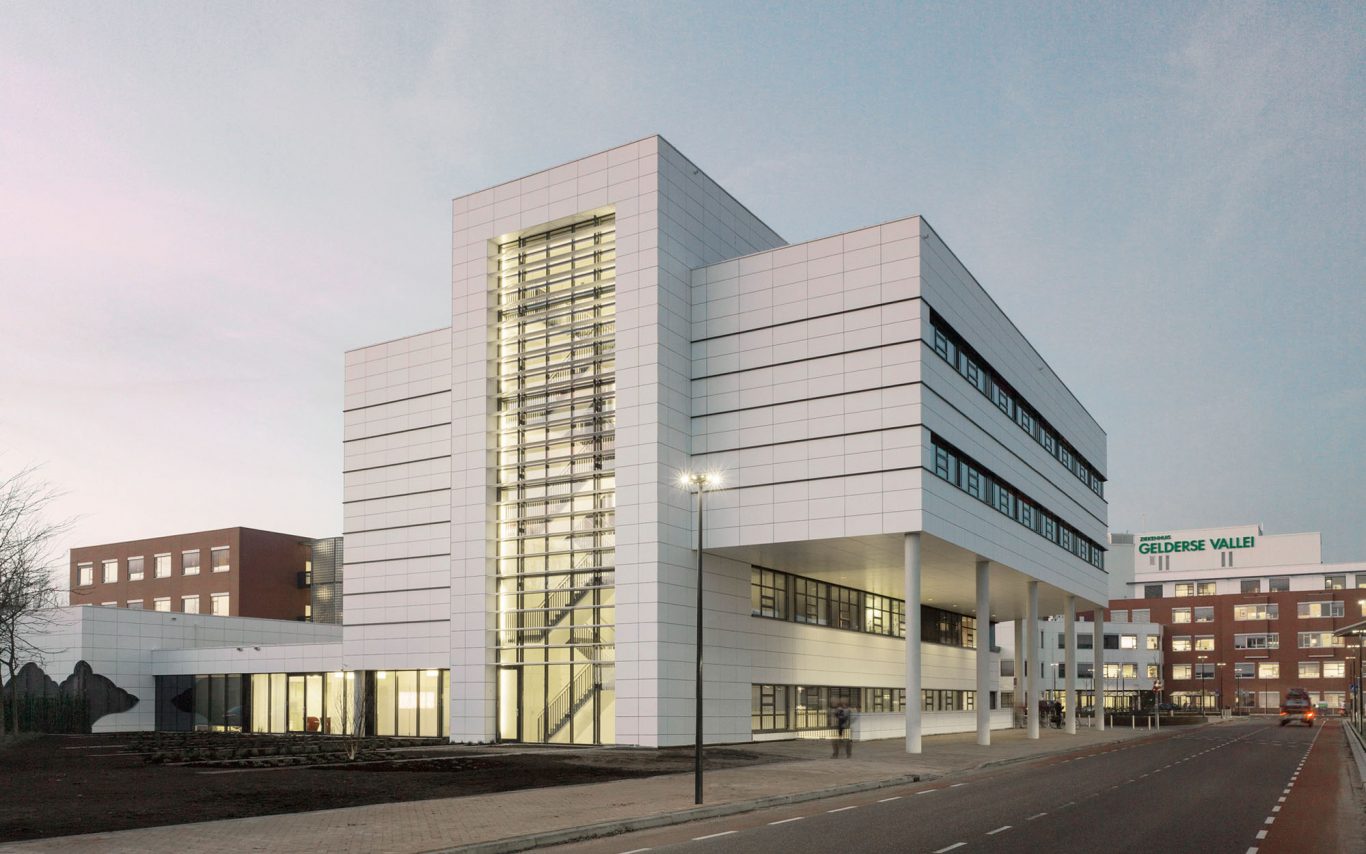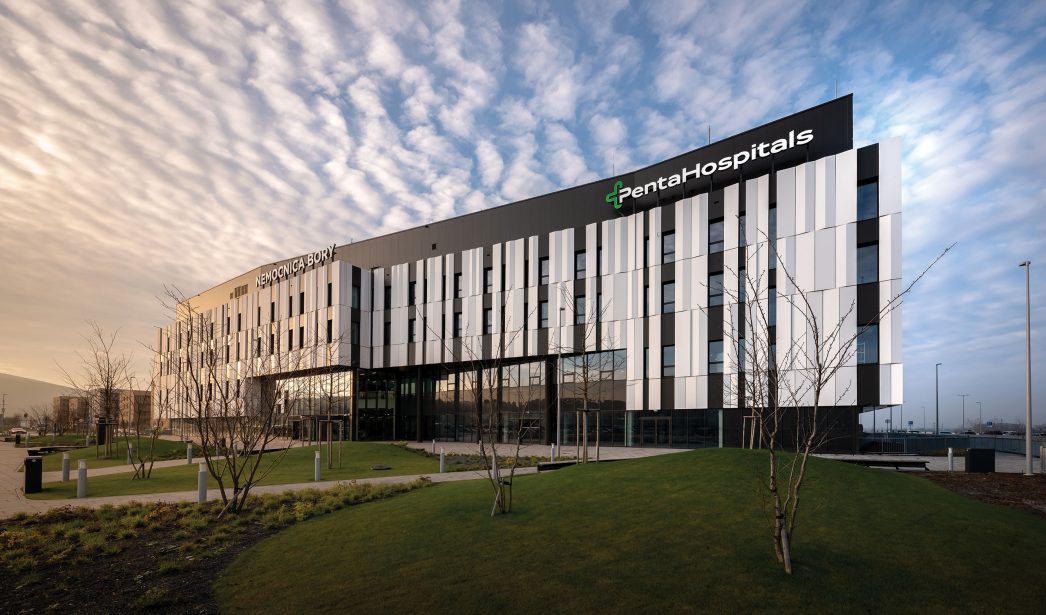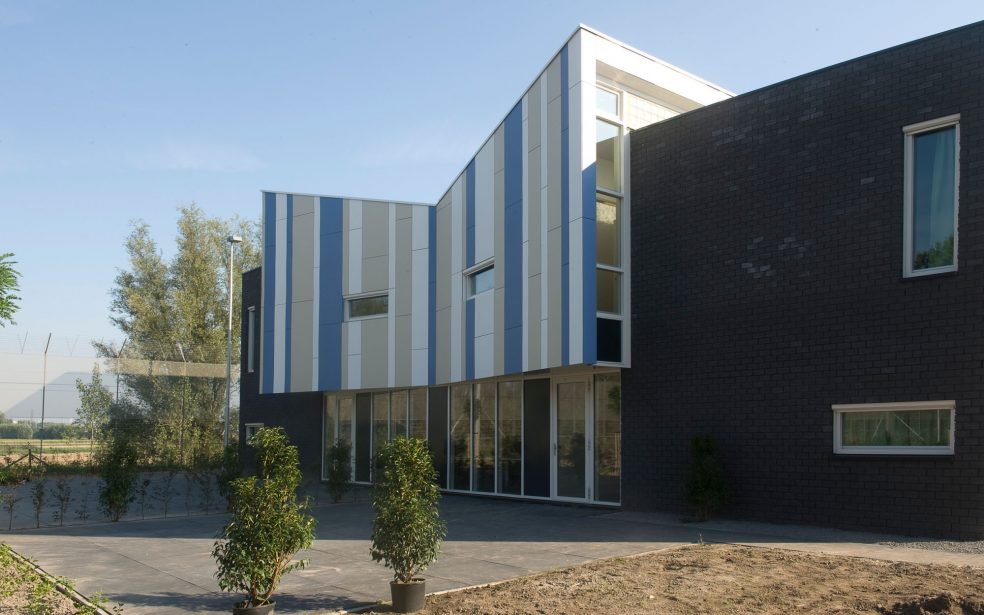Function
Gelderse Vallei Hospital is characterized by a red brickwork base against which white volumes are positioned. The same theme has been applied for the expansion on the entrance side of the building. Within the red shell of the existing building, a white volume has been placed. This new volume is connected to the existing building through a glass atrium. A wide, two-story tall glass façade with a curved canopy defines the appearance of the new entrance. Circular objects have been incorporated into it to house the central reception desk, information area, and the guest services desk. The atrium has double-height sections, allowing the existing facade to remain prominently visible. The rear side of the atrium, also a glass façade, opens up to a patio. This high level of transparency maintains the orientation towards the existing structure. On the upper floor, the staff restaurant is situated overlooking the atrium, creating a spatial relationship between the ground floor and the upper level.
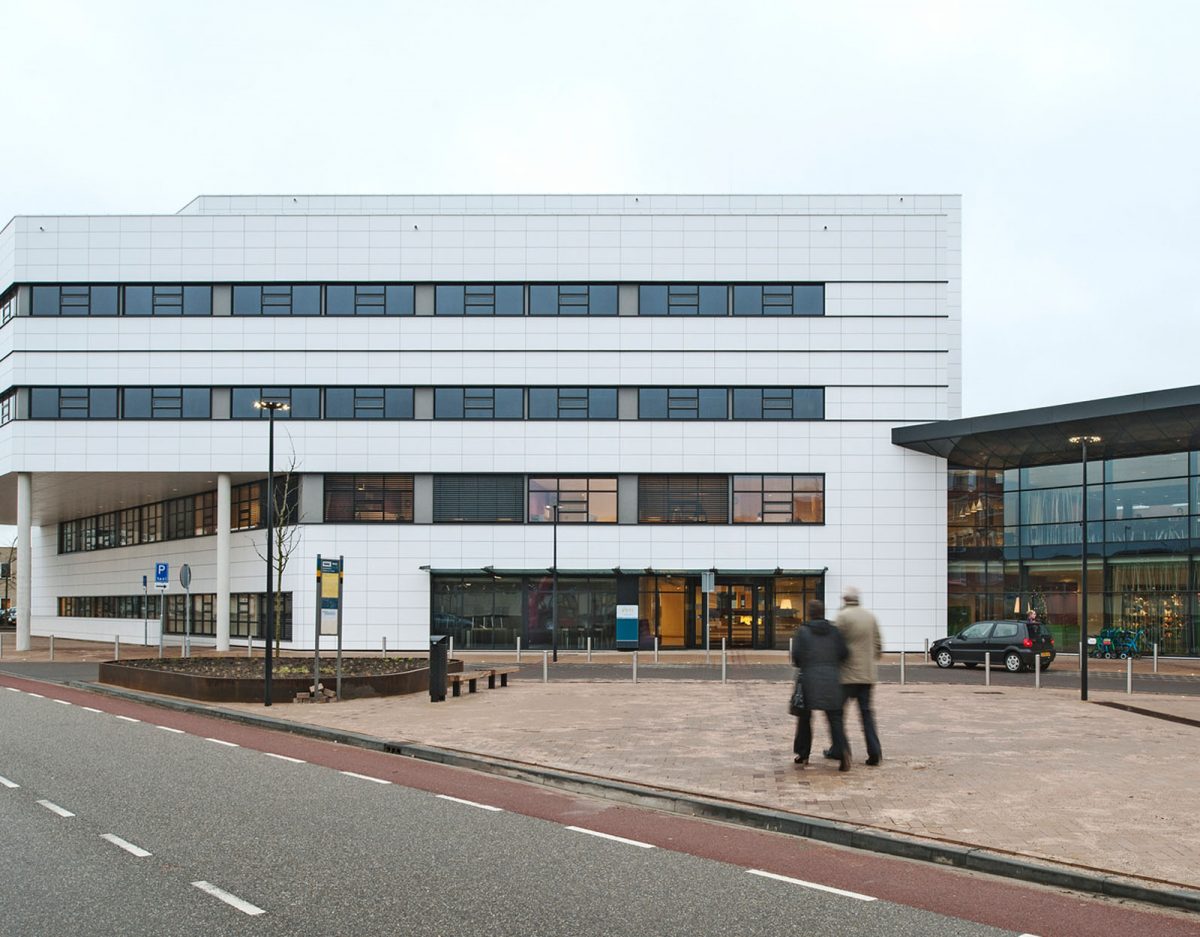
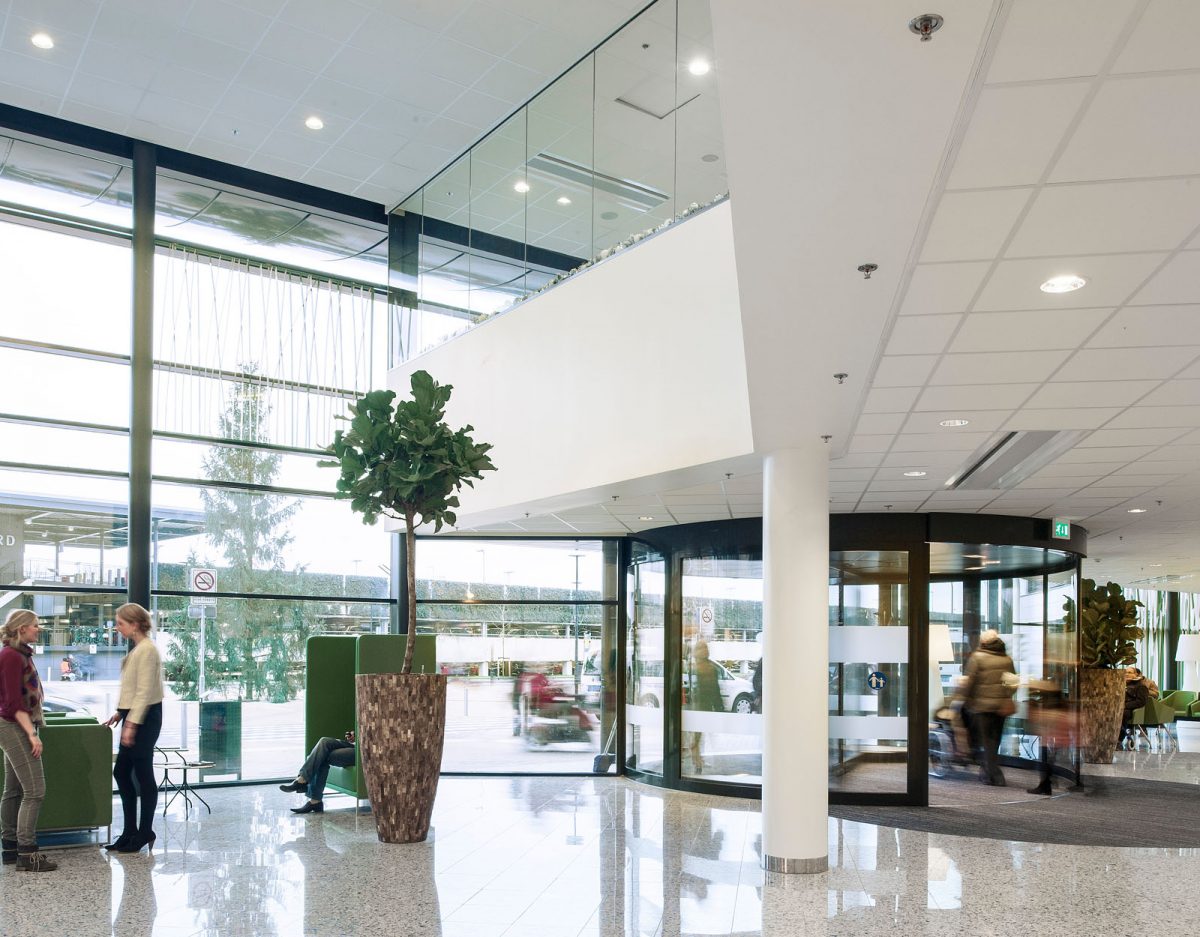
The emphasis in the healthcare building is on oncological care. On the ground floor, housing the 2 radiotherapy rooms, is the Arnhem Radiotherapeutic Institute (Arti). The plan’s structure takes into account the expansion of the number of rooms to accommodate the growing demand for radiotherapy. On the first floor, there’s the oncology outpatient clinic and the day treatment area (chemotherapy). The two upper floors will be set up as general nursing wards. These departments provide space to implement a renovation and remodeling plan in the existing building and to transition the nursing wards to more single and double bedded rooms. Additionally, the healthcare building is equipped with a bicycle storage area and a technical layer on the roof.

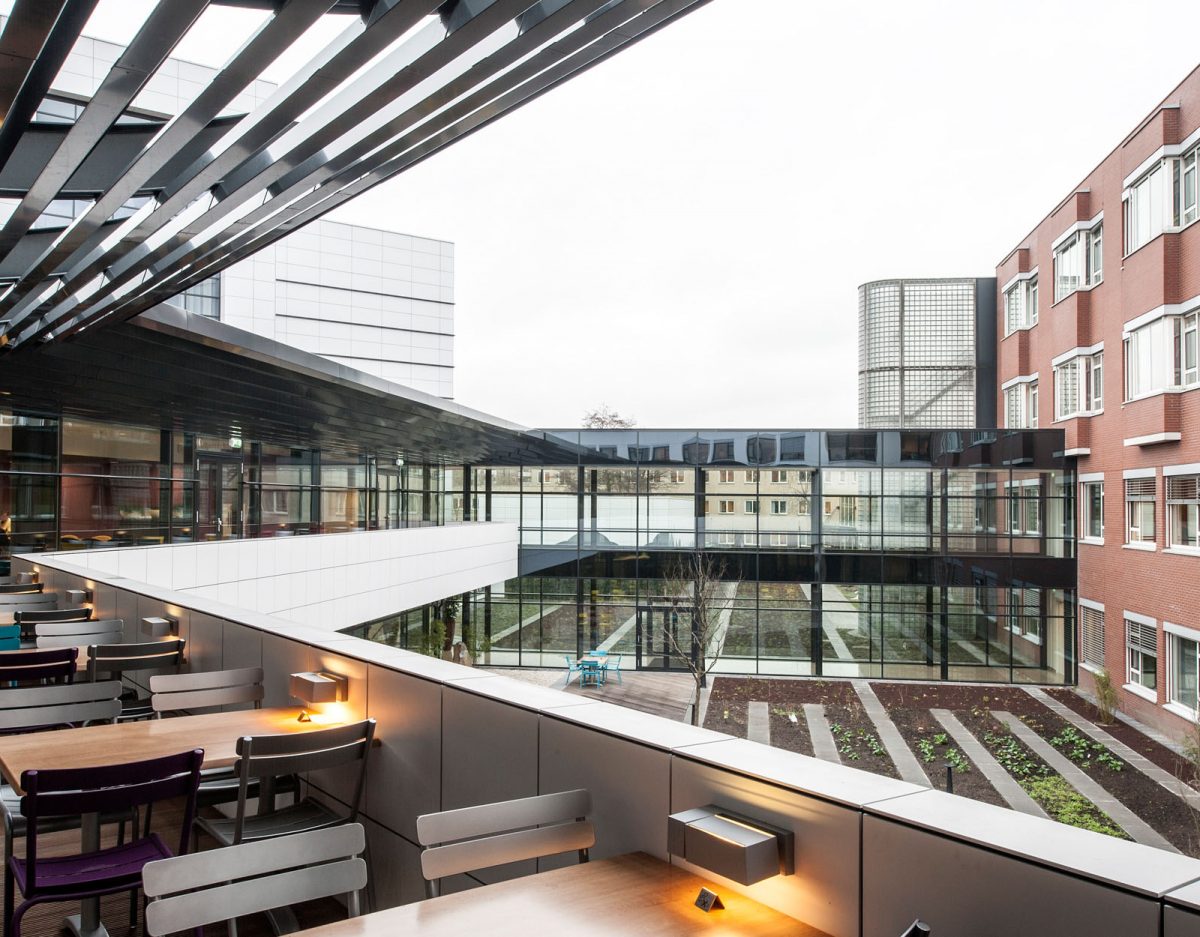
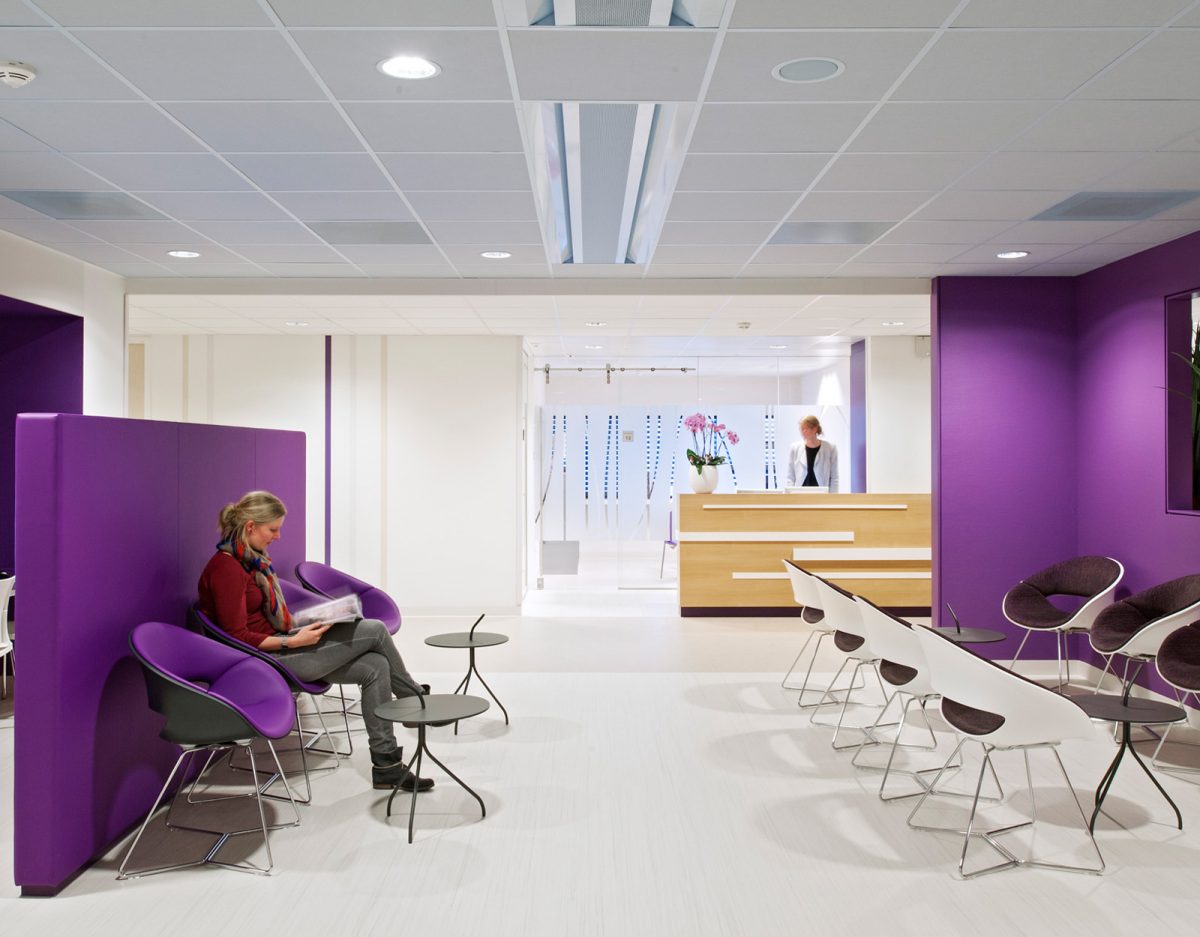
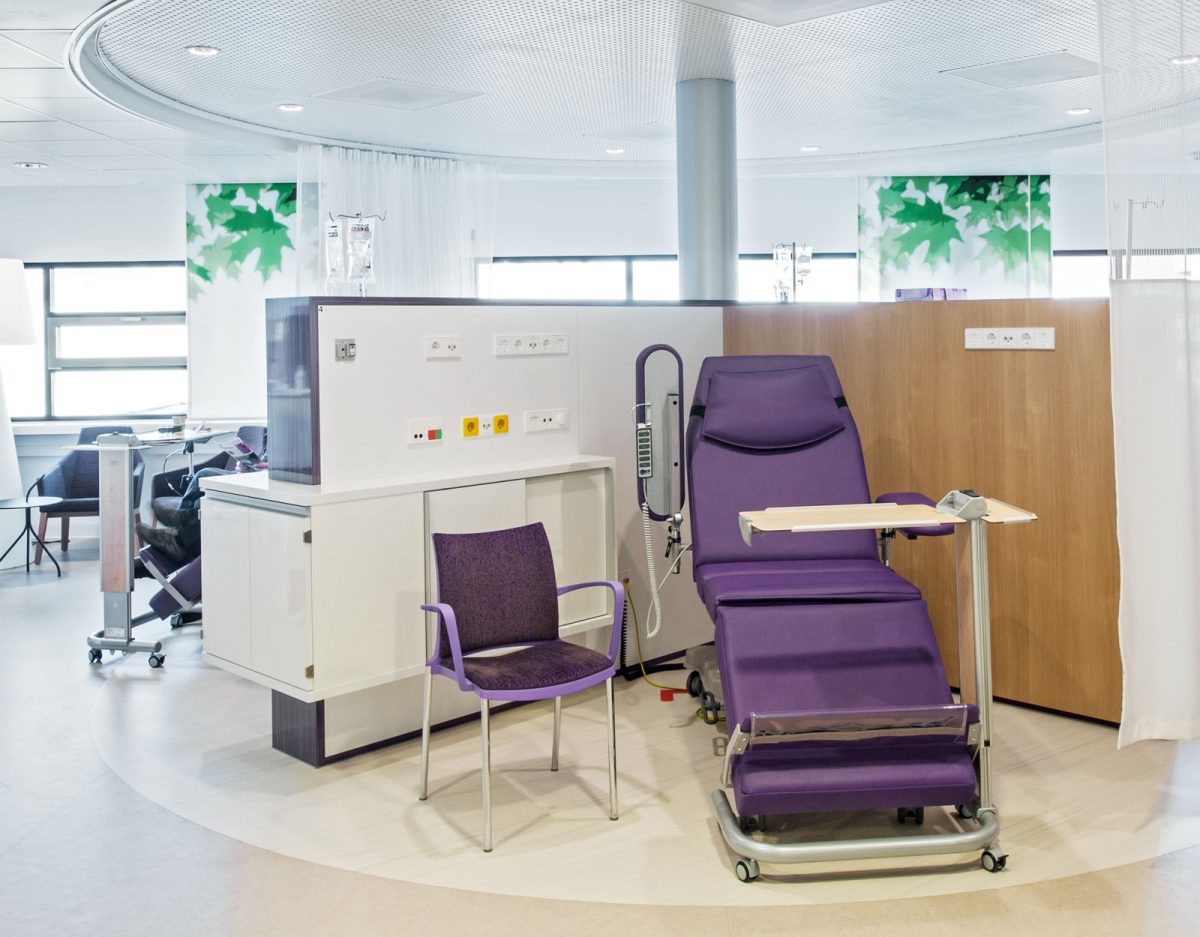
Sustainability
Throughout the design process, sustainability has been a consistent focal point. Choices regarding materials and energy measures have been continuously evaluated through the use of Greencalc. The building features a column structure, ensuring flexibility for the future. Shafts have been integrated as much as possible with fixed elements such as staircases and elevator blocks, and interior walls have been constructed as lightweight partition walls. The hall’s roof is designed as a moss-sedum roof, which not only offers a pleasant view but also contributes to water buffering. The hall’s sun shading is implemented as fixed sunscreens, while the healthcare building’s sun shading consists of adjustable louvers on the exterior. Fixed louvers act as external sun shading for the staircase at the top of the building, helping to keep heat gain outside the building. Heat and cold storage, heat recovery, and low-temperature heating contribute to a sustainable building from the installation concept.
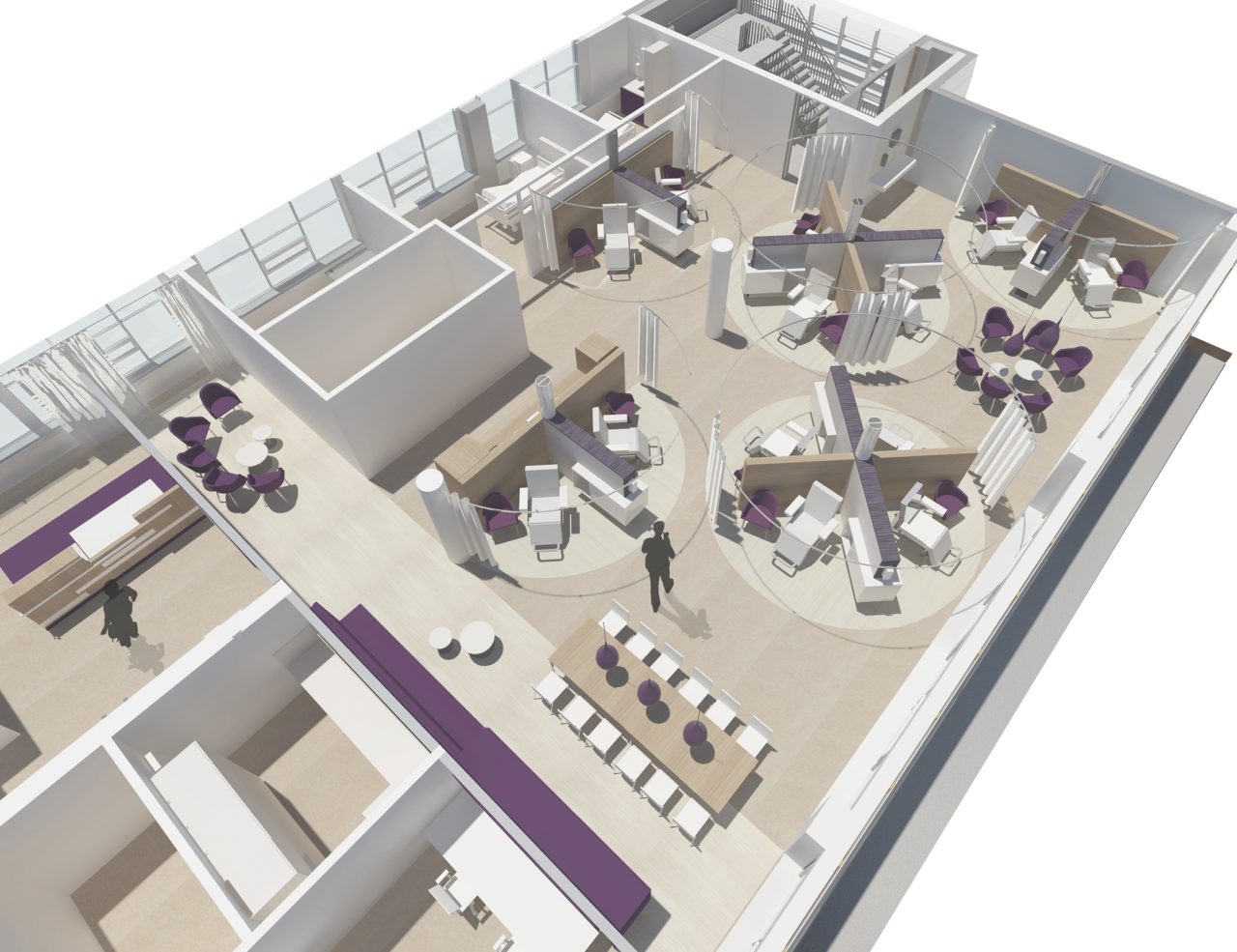
BIM and Process
For the expansion of Gelderse Vallei Hospital, the client set the goal of reducing construction costs and maximizing the utilization of everyone’s knowledge and expertise. To achieve this, two crucial tools were employed: Building Information Modeling (BIM) – developed through Revit at Gortemaker Algra Feenstra – and a construction team.
Both the client (ZGV), the designing parties, and the construction consortium expressed the ambition to fully leverage BIM throughout the project. However, this required a different way of collaboration.
It was an adjustment for all parties involved; a change in how they interacted and the processes they followed. Constant emphasis had to be placed on the benefits of collaboration, transparency, and breaking down silos. It takes effort to change ingrained habits and processes, but the results are evident!

